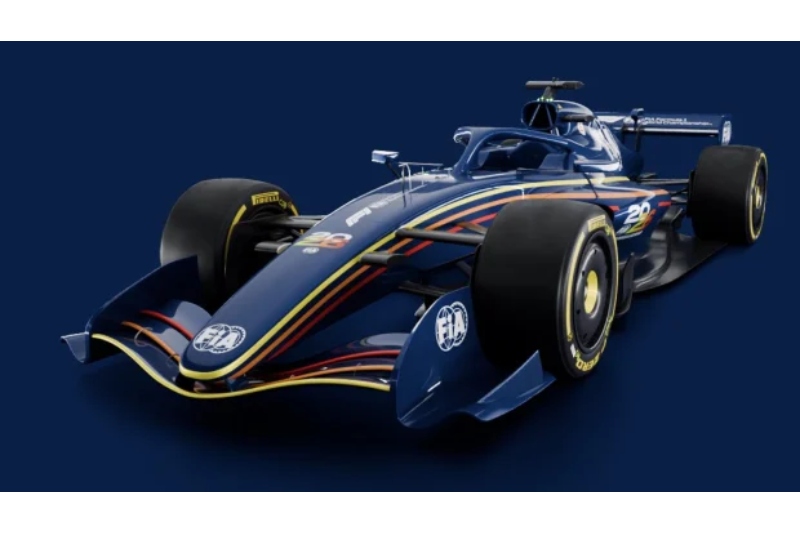FIA Gives The First Look at The 2026 Formula One Car

New F1 cars: More power, more electrification
Fuel that is 100 percent sustainable—possibly even a synthetic e-fuel—will be used in power units. The current turbocharged 1.6-liter V-6 hybrid power units will remain in place, but they will be simplified as a result of the removal of the MGU-H, an electric motor-generator that uses the turbocharger to collect exhaust energy.
The MGU-K unit will stay and put out more power. It assists in driving the wheels and recovers energy when braking. The existing 160 horsepower must be increased to 469 horsepower in accordance with the regulations. The system’s maximum output will still have over 1,000 horsepower, but in 2026, the total amount of fuel used in a race should decrease from roughly 220 pounds to 154 pounds.
The FIA refers to a significant additional modification as a Manual Override mode. When a car ahead of them gets close, this will provide drivers an instantaneous electrical energy boost to aid in overtaking. At 180 mph, the energy of a leading car tapers off, reaching zero at 220 mph.
A record number of vendors have already expressed interest in the new power unit design. Audi will join the sport in 2026 as a power unit supplier and constructor, joining existing sponsors Red Bull Racing, which is presently using a Honda design, as well as suppliers Alpine, Ferrari, and Mercedes-Benz AMG. While Red Bull will collaborate with Ford on developing its own new power unit, Honda is also scheduled to make a comeback as a power unit provider, partnering with Aston Martin.
Lighter, nimbler cars
A smaller automobile is something that will appeal to enthusiasts. The width will decrease from 2,000 mm (78.7 inches) to 1,900 mm (74.8 inches), while the wheelbase will decrease from a maximum of 3,600 mm (141.7 inches) to 3,400 mm (133.6 inches). There will also be a 150 mm (5.9 inch) reduction in the maximum floor width. This should make automobiles more agile and facilitate passing, particularly on tight courses.
The wheels, which will still have a diameter of 18 inches, will likewise get smaller—by 25 mm (0.98 inch) up front and 30 mm (1.18 inch) down back—while maintaining a rather high level of grip.
There will be less weight in the car because of its reduced size. The minimal weight requirement for cars in 2026 will be 1,693 pounds, which is 66 pounds less than it is now. The driver’s weight is included in the minimum weight requirement.
New active aerodynamics
Aerodynamics will also be disrupted by the design guidelines. Greater turning speeds will be achieved by the cars’ new active aerodynamic systems, which include moveable front and rear wings. On the straights, drivers in 2026 will have the option to switch to X-Mode, a low-drag configuration, whenever they encounter one, in place of the current Drag Reduction System, which is limited to specific sections of the circuit.
The active flap system on the front wing, which is now thinner, will consist of two elements, but the rear wing will have three elements. Additionally, the current lower beam wing on the rear wing will be eliminated, and the end plate designs will be simplified. New boards at the front of the side pods will aid in controlling wheel wake, and the present front wheel arches will be removed.
Additionally, the cars’ less effective diffuser and somewhat flat floor will lessen the ground effect.
With the modifications, the cars will have 30% less downforce and 55% less drag than they do now.
Improved safety
Lastly, the existing strict standards will be substantially enhanced in the area of safety. Tougher testing protocols and stronger buildings will be the primary means of achieving this. One of the main safety features will be the replacement of the existing single-stage front crash structure with a two-stage one, which will shield the passenger cell from further frontal hits. Along with the other single-seat racing categories, roll hoop loads will also be increased, and new rear wing endplate lights will be needed.